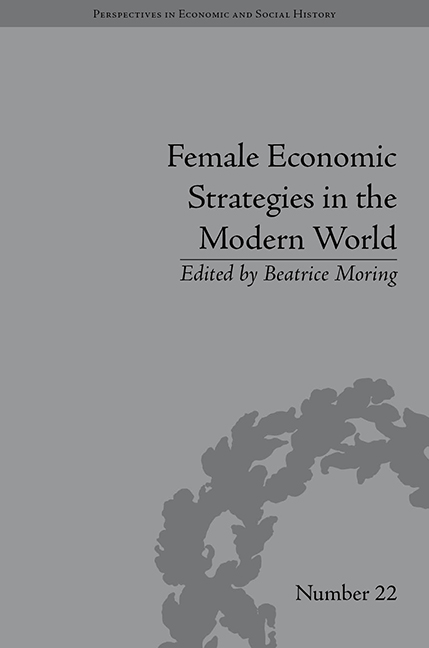Book contents
- Frontmatter
- Contents
- List of Contributors
- List of Tables
- Introduction
- 1 Widows, Family and Poor Relief in England from the Sixteenth to the Twentieth Century
- 2 Survival Strategies of Poor Women in Two Localities in Guipuzcoa (Northern Spain) in the Nineteenth and Twentieth Centuries
- 3 Women, Work and Survival Strategies in Urban Northern Europe before the First World War
- 4 Women, Households and Independence under the Old English Poor Laws
- 5 The Economic Strategies of Widows in Switzerland from the mid-Nineteenth to the mid-Twentieth Century
- 6 Mexico: Women and Poverty (1994–2004): Progresa-Oportunidades Conditional Cash Transfer Programme
- 7 Gender and Migration in the Pyrenees in the Nineteenth Century: Gender-Differentiated Patterns and Destinies
- 8 Women and Property in Eighteenth-Century Austria: Separate Property, Usufruct and Ownership in Different Family Configurations
- Notes
- Index
Introduction
- Frontmatter
- Contents
- List of Contributors
- List of Tables
- Introduction
- 1 Widows, Family and Poor Relief in England from the Sixteenth to the Twentieth Century
- 2 Survival Strategies of Poor Women in Two Localities in Guipuzcoa (Northern Spain) in the Nineteenth and Twentieth Centuries
- 3 Women, Work and Survival Strategies in Urban Northern Europe before the First World War
- 4 Women, Households and Independence under the Old English Poor Laws
- 5 The Economic Strategies of Widows in Switzerland from the mid-Nineteenth to the mid-Twentieth Century
- 6 Mexico: Women and Poverty (1994–2004): Progresa-Oportunidades Conditional Cash Transfer Programme
- 7 Gender and Migration in the Pyrenees in the Nineteenth Century: Gender-Differentiated Patterns and Destinies
- 8 Women and Property in Eighteenth-Century Austria: Separate Property, Usufruct and Ownership in Different Family Configurations
- Notes
- Index
Summary
Women and the Family, Work or Poverty and Isolation
In 2006 Lynn Abrams raised the question whether despite of decades of research into the history of women the historical narrative still remains predominantly male. The image of women as the victims of male society can easily be added as an extra chapter while the actors in politics, economy, social development, organizations etc. are men. At home they have dependant, passive wives controlled in marriage and marginalized in widow or spinsterhood. Assigning women the role to produce new generations primarily, and measuring their success in ability to marry and remarry and lack of success in failing to do so has also been criticized by Todd and Pelling. These views echo those of Hufton in 1984 when in her article ‘Women without men’, she queried why women have been viewed primarily as wives and household members, not individuals, in family history research. While twenty years separate these statements the tendencies to discuss women as being in need of the protection of a man and assumed to desire marriage and remarriage seems to have persisted. The fact that papers produced in the last decade can include statements that ‘old women’ (as a group) lacked chances on the marriage market because they were ‘infertile’ and ‘sexually unattractive’, with ‘tendencies of physical and mental illness’, raise the question to what extent studies of women penetrate not only mainstream but even the family history and demography field.
- Type
- Chapter
- Information
- Female Economic Strategies in the Modern World , pp. 1 - 10Publisher: Pickering & ChattoFirst published in: 2014



